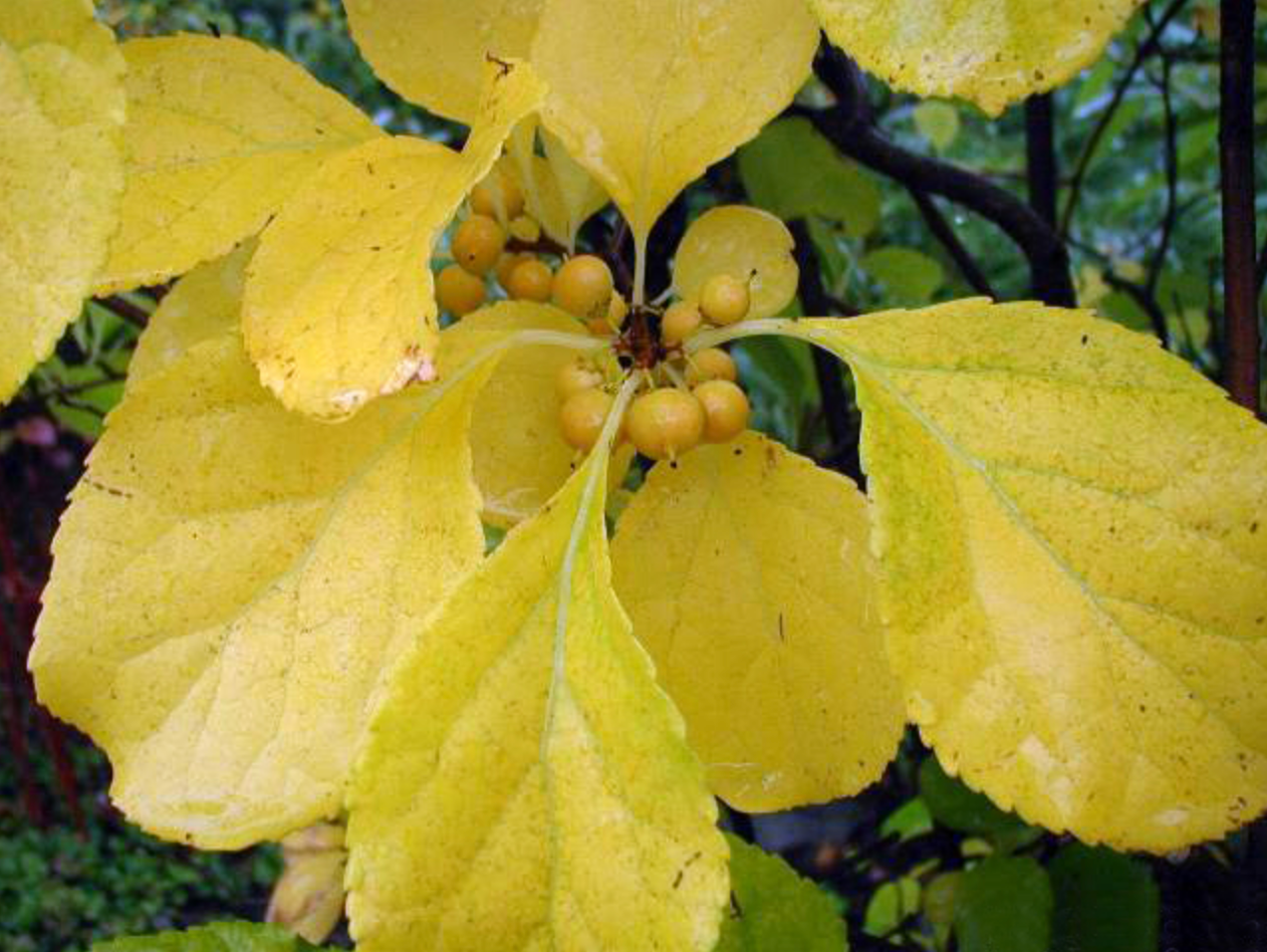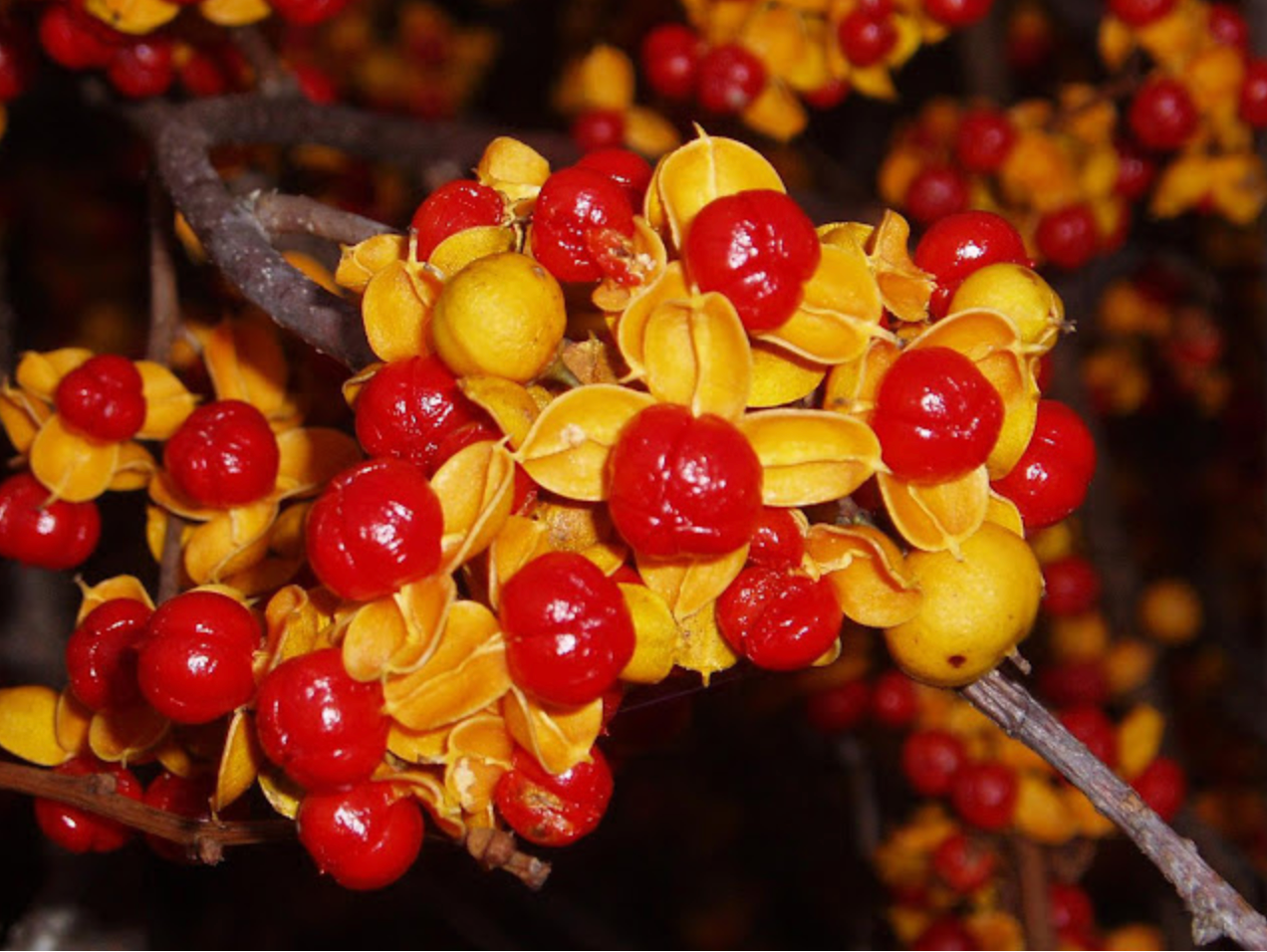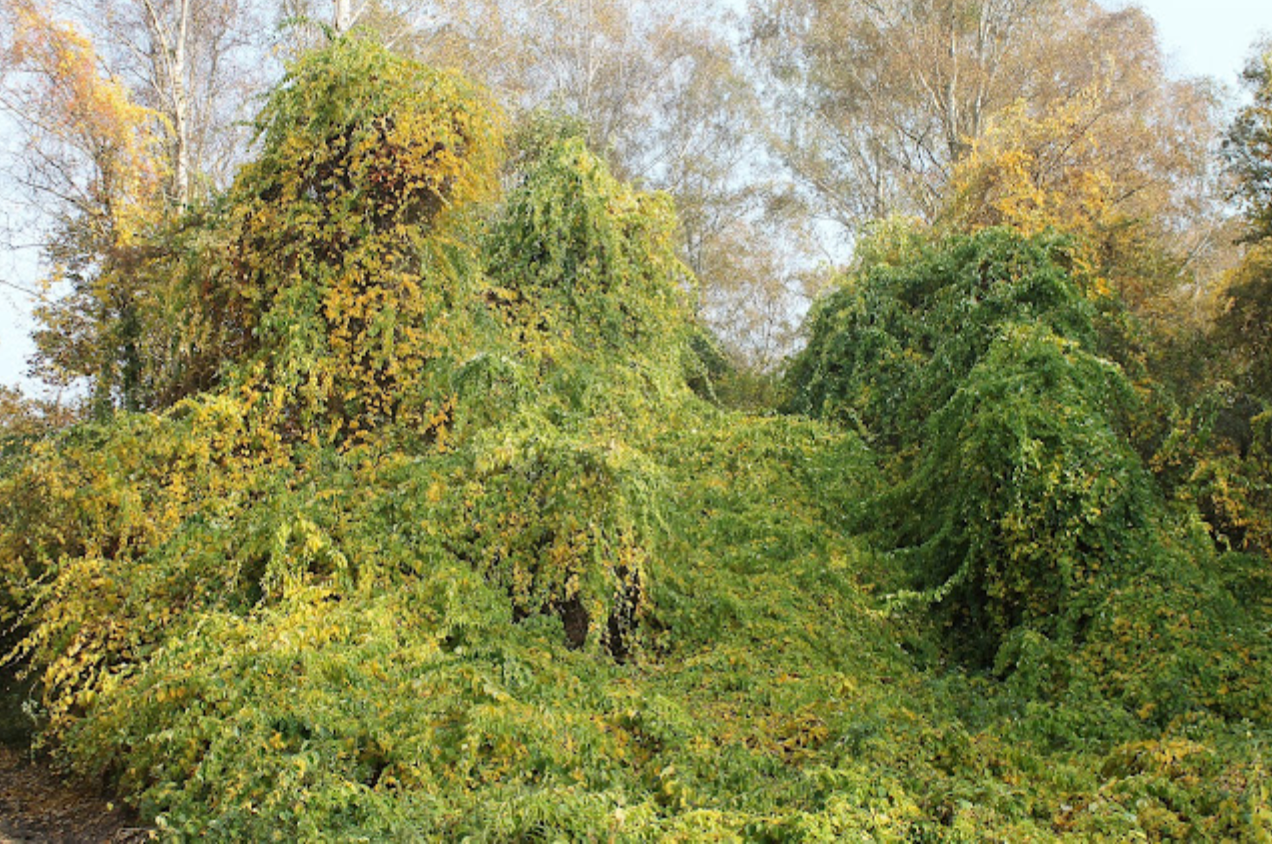About Oriental Bittersweet
As its name implies, Oriental Bittersweet hails from Asia. Celestrus orbiculatus Thub., commonly called Oriental Bittersweet, is native to China where it is most widely distributed with 16 endemic species. It is also native to Korea and Japan.
As prolific as it is destructive, today, there are 30 types of Oriental Bittersweet found worldwide in the tropical, subtropical, and temperate zones of Asia, Australia, and North and South America, as well as Madagascar.
About Oriental Bittersweet
Horticulturally, Oriental Bittersweet's etymological name is Celastrus orbiculatus Thub. Celastrus comes from the ancient Greek word kelastros, a name for an evergreen tree, Orbiculatus is Latin and means disc-shaped, and Thub. refers to Carl Peter Thunberg who first documented this vine in Japan in 1784.
Oriental Bittersweet is a deciduous woody perennial shrub whose vines are rampant climbers. The glossy green-toothed leaves of Oriental Bittersweet are round with a slightly pointed tip and can grow up to four inches long. In late summer the leaves turn a vivid yellow, usually before any fall foliage occurs making them beautiful spots of color in the landscape and easy to spot.

Oriental Bittersweet is dioecious meaning that pollen and fruits come from separate male and female plants. Clusters of small flowers bloom in May and June and, as they mature, the female plants produce yellow-skinned fruit in late summer. The fruit of Oriental Bittersweet splits open in the fall to reveal red-orange berries that have been prized worldwide for their beauty. One thing that made Oriental Bittersweet so popular when it was first introduced was that the berries remain bright red after the leaves have fallen adding a splash of color to the dreary winter landscape.

The most defining characteristic of Oriental Bittersweet is its twisting vine that can grow up to sixty feet. When the stems are young, they are bright green, larger more mature vines have light-brown to silver-grey colored bark that has a rugged cracked netted texture. When Oriental Bittersweet grows alone, it forms a thicket, when it grows near a tree the vines use the tree as scaffolding and twist their way around the trunk. Vines have been known to strangle a tree to death by preventing photosynthesis and constricting the tree's vascular system by preventing nutrient flow between the roots and growth points. Most often, a heavily infested tree will just fall over. It also kills any undergrowth around the tree by blocking out the light.

Oriental Bittersweet reproduces by seed that is primarily spread by birds. It also spreads using its extensive root system. Vines can root where they touch the ground. Once a plant is established, even though it is cut, its rhizomes spread and send up new shoots. Although Oriental Bittersweet is considered to be an invasive plant I enjoy harvesting it and making something beautiful and useful from this pesky vine. I look for trees that are heavily infested and harvest vines to help save the trees and the plants around them. I like to harvest bittersweet from the early spring through mid-summer, well before the berries appear. Cutting at the base of the vine will kill the vine above the cut. Another thing I look for when harvesting is the shape and dimension of the vine and imagine what I can make from it. If I do cut a vine with fruit on it, I always make sure I dispose of the fruit properly to prevent it from seeding.






